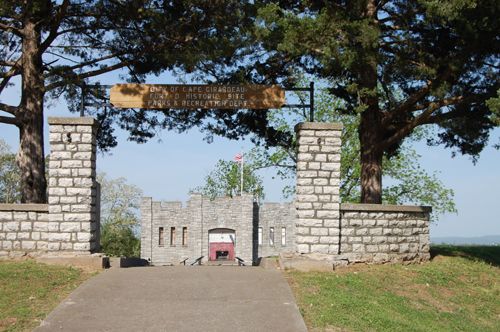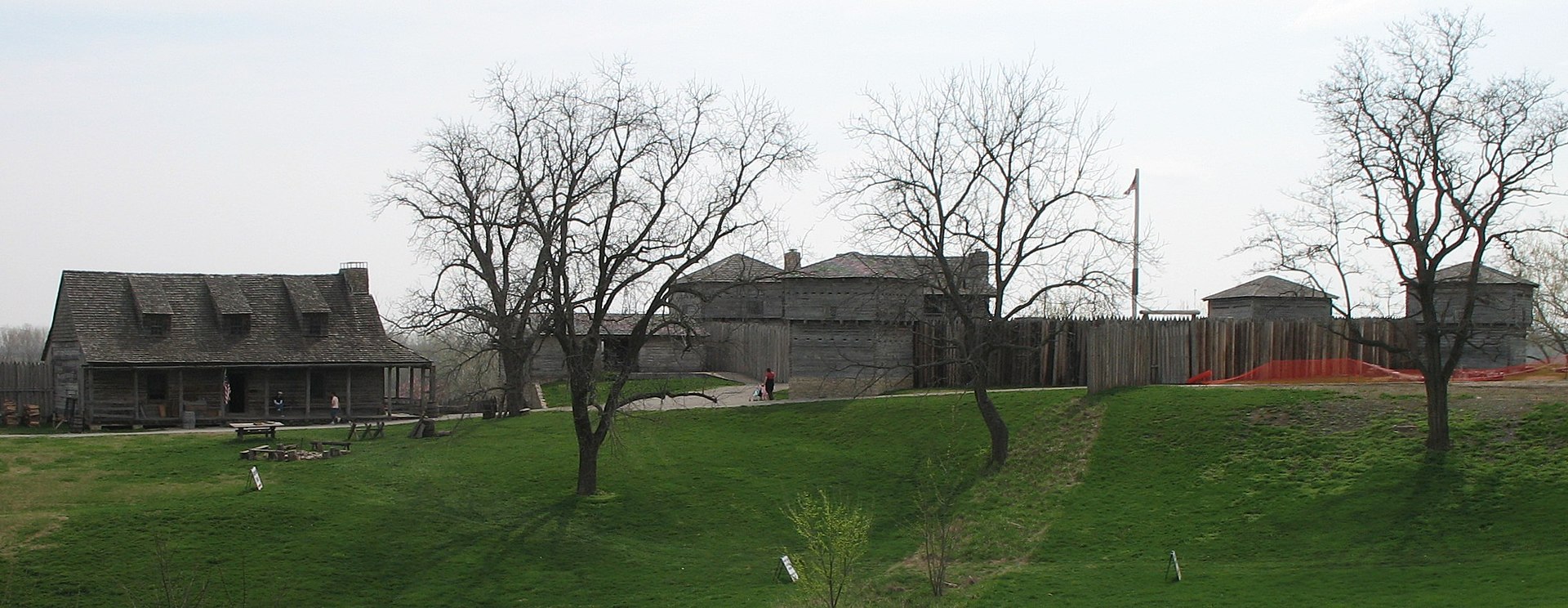
Fort Cap-au-Gris: Missouri’s Forgotten Frontier Outpost in the War of 1812
In the vast tapestry of American history, certain threads shine brightly – iconic battles, legendary figures, and monumental turning points. Yet, just beneath the surface, countless other threads, equally vital, lie largely unseen, woven into the fabric of local lore and specialized scholarship. One such thread is the story of Fort Cap-au-Gris, a humble yet strategically critical outpost on the Missouri frontier during the War of 1812. Far from the grand naval clashes or the burning of Washington D.C., Cap-au-Gris represents the gritty, often brutal reality of a conflict fought on the very edge of an expanding nation, where settlers, soldiers, and Indigenous peoples vied for control of a nascent territory.
Perched atop a bluff overlooking the mighty Mississippi River in what is now St. Charles County, Missouri, Fort Cap-au-Gris was not a grand stone fortress. It was, like many frontier defenses of its era, a rough-hewn stockade, likely enclosing a blockhouse and a few cabins, built by the very militia it was designed to protect. Its name, "Cap-au-Gris," French for "Grey Cape" or "Grey Bluff," speaks to the enduring legacy of French influence in the region, even as American settlers pushed westward. But despite its modest appearance, the fort played an outsized role in safeguarding the vital waterways and scattered settlements of the Missouri Territory from British-allied Native American forces.
The Western Front: A War for Survival

The War of 1812, often dubbed "America’s Second War of Independence," was not confined to the Atlantic seaboard or the Great Lakes. On the western frontier, it was a deeply personal and existential conflict. British agents, operating from Canada, actively supplied and encouraged various Native American tribes – primarily the Sauk, Fox, Kickapoo, and Potawatomi – to resist American expansion. For these tribes, the war presented a desperate opportunity to stem the tide of encroaching settlers and preserve their ancestral lands and way of life. For the American frontiersmen, often recent arrivals from Kentucky, Virginia, and other eastern states, the conflict was about protecting their homes, families, and the very dream of westward expansion.
Missouri, then a sparsely populated territory, found itself on the front lines. Its rivers – the Mississippi and the Missouri – were the lifeblood of commerce and communication, serving as highways for settlers, traders, and military supplies. Control of these waterways was paramount. The region’s scattered settlements, like St. Louis, St. Charles, and Portage des Sioux, were vulnerable to raids. It was in this volatile environment that the necessity for defensive outposts like Cap-au-Gris became acutely clear.
The Genesis of an Outpost
Fort Cap-au-Gris came into being in late 1813 or early 1814, primarily through the efforts of local militia and resourceful settlers. Its location was no accident. The bluff offered a commanding view of the Mississippi River, allowing defenders to monitor river traffic and spot approaching threats. It was strategically positioned to protect the "Boone’s Lick Trail," a critical route that led westward from St. Charles into the salt-rich lands of central Missouri, and to guard against incursions from the Illinois side of the river.
One of the prominent figures associated with the fort was Captain Nathan Boone, son of the legendary Daniel Boone. Nathan, a seasoned frontiersman, commanded a company of rangers known for their tracking skills and intimate knowledge of the wilderness. His presence lent an air of rugged expertise to the fort’s defense. Other local leaders, like Andrew Woods, on whose land the fort was likely built, were also instrumental in its establishment and maintenance. These were not professional soldiers in the European sense, but citizen-soldiers – farmers, hunters, and tradesmen – who took up arms to defend their nascent communities.
Life at Fort Cap-au-Gris was undoubtedly harsh. The soldiers, often poorly supplied and paid, faced not only the constant threat of attack but also the rigors of frontier existence: disease, isolation, and the unforgiving Missouri weather. "These men were not fighting for glory in some distant capital," notes Dr. Emily Carter, a historian specializing in the War of 1812 on the frontier. "They were fighting for their next harvest, for their families’ safety, and for the very right to call this land home. Every day at a place like Cap-au-Gris was a testament to sheer grit and determination."
Skirmishes and the "Battle" of Cap-au-Gris
While Fort Cap-au-Gris never witnessed a large-scale siege or a dramatic, decisive battle, it was a focal point for numerous skirmishes and patrols. The very presence of the fort served as a deterrent, forcing British-allied raiding parties to reconsider their routes or engage in costly direct assaults.

The most notable engagement associated with the fort occurred in July 1814. A large force of British-allied Native Americans, estimated to be between 100 and 200 warriors, descended upon the region. Their objective was likely to disrupt river traffic, attack settlements, and perhaps even overrun the fort. On July 10th, a party of American rangers, including men from Cap-au-Gris, encountered the Native American force. A series of sharp, brutal engagements ensued over several days, often referred to collectively as the "Battle of Cap-au-Gris."
Accounts describe intense fighting in the dense woods and along the riverbanks. American forces, though often outnumbered, used their knowledge of the terrain and their frontier fighting skills to their advantage. Casualties were sustained on both sides. While the specific outcomes of each skirmish varied, the overall effect was that the American forces, including the militia from Cap-au-Gris, successfully repelled the major Native American offensive. They prevented the raiding party from achieving its larger objectives, thus securing the river and the surrounding settlements for the time being.
"The ‘Battle of Cap-au-Gris’ wasn’t a single, grand confrontation," explains local historian John Davies. "It was a series of desperate, localized fights – ambushes, retreats, counter-attacks – over several days. What it showed was the resolve of the frontier militia and the critical role these small forts played in coordinating defense and providing a rallying point." The Native American forces, despite their numerical superiority, ultimately withdrew, unable to dislodge the determined American resistance.
The Indigenous Perspective: A War for Survival
It is crucial to remember that from the perspective of the Native American tribes, the conflict was not an act of aggression but a desperate struggle to preserve their ancestral lands and cultural identity against relentless encroachment. Allied with the British, who promised to halt American expansion, they saw the settlers and their forts as direct threats to their very existence. The raids and attacks were strategic responses to American expansion, attempts to drive back the tide and reclaim what they believed was rightfully theirs. The bravery and tenacity of the Native American warriors in these engagements were as profound as that of the American militiamen, each fighting for their vision of the future.
Decline and Disappearance
With the signing of the Treaty of Ghent in December 1814 and its ratification in early 1815, the War of 1812 officially ended. The British ceased their support for Native American resistance, and the immediate threat to the Missouri frontier diminished significantly. Fort Cap-au-Gris, having served its purpose, was gradually abandoned.
Like many temporary frontier fortifications, it was not built to last. Its wooden structures would have quickly succumbed to the elements, salvaged for other uses, or simply rotted away. The land, once a strategic military post, reverted to its agricultural purpose. As new settlers arrived and the frontier pushed further west, the memory of the humble fort on the grey bluff began to fade. Other, more significant events and figures came to dominate the historical narrative, leaving Cap-au-Gris largely to the dusty annals of local history.
A Legacy Rediscovered
Today, the precise location of Fort Cap-au-Gris is a subject of ongoing historical and archaeological interest. While no visible structures remain, researchers continue to pore over old maps, land records, and historical accounts to pinpoint its exact footprint. The land on which it once stood remains privately owned, but the potential for archaeological discovery is tantalizing. Imagine unearthing remnants of a blockhouse, musket balls, fragments of pottery, or the personal effects of a militiaman – tangible links to a bygone era.
Fort Cap-au-Gris, despite its obscurity, offers a powerful lens through which to understand the complex realities of the War of 1812 on the American frontier. It reminds us that history is not just made in grand declarations and celebrated battles, but also in the daily struggles of ordinary people defending their homes, in the strategic importance of seemingly small outposts, and in the often-overlooked courage of those who stood on the edge of civilization.
Its story is a testament to the resilience of early American settlers, the fierce determination of Native American tribes to protect their lands, and the vital role played by local militias in shaping the destiny of a young nation. As the Mississippi River continues its timeless flow past the grey bluffs of St. Charles County, the echoes of Fort Cap-au-Gris serve as a quiet but poignant reminder of a forgotten frontier, where the future of Missouri, and indeed the American West, was fiercely contested and ultimately forged. Its tale, once whispered among frontiersmen, now deserves to be heard anew, a significant chapter in the ongoing narrative of American expansion and conflict.


